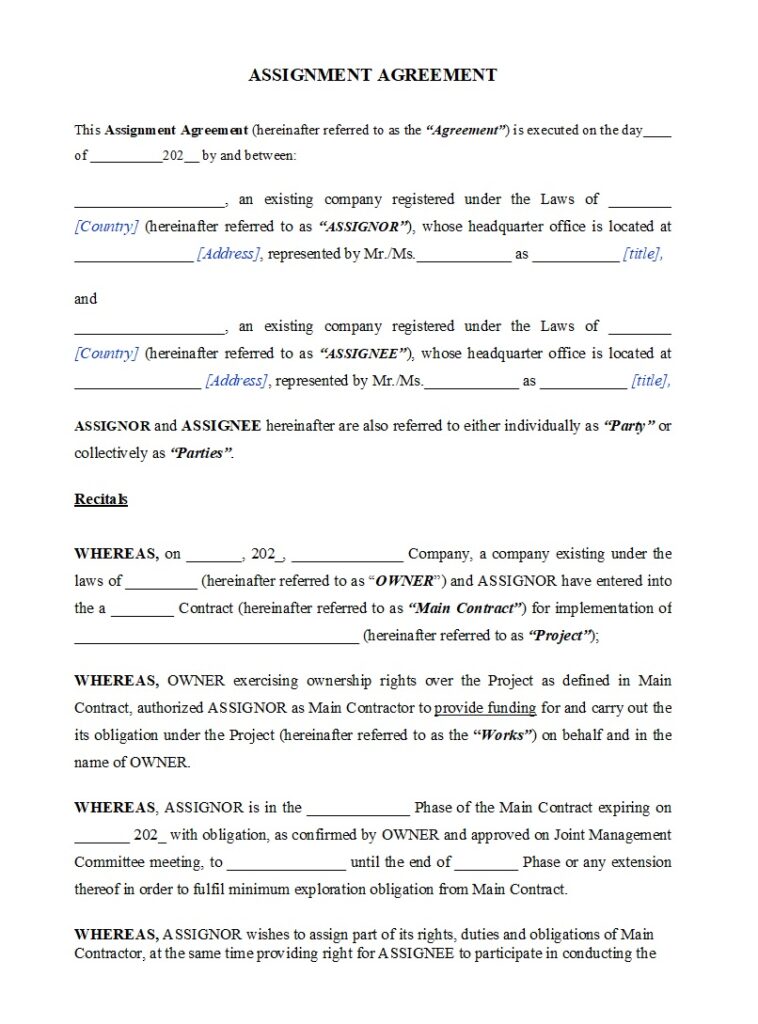A Project Contract’s Assignment Agreement transfers rights and duties from one party to another. Construction, engineering, and service projects often require this transfer. A contractor, consultant, or service provider may assign its role to another entity. The agreement secures continuity and clarifies responsibilities between the assignor, the assignee, and the other contracting party.

Purpose and Function
The agreement allows one party to shift obligations without interrupting project delivery. Companies use it during mergers, acquisitions, or restructuring. Written terms protect stakeholders from disputes and set clear expectations. The agreement ensures warranties, guarantees, and liabilities remain enforceable after transfer. The non-assigning party must usually give written consent before the transfer becomes effective.
Key Provisions
The Project Contract’s Assignment Agreement begins by naming the original project contract with date, scope, and parties. It lists the rights and obligations that transfer, such as payments and performance duties. A consent clause requires approval from the beneficiary party. Assignor and assignee each provide warranties confirming authority and ability to perform. Indemnity clauses protect parties against breaches. A dispute resolution clause outlines steps for resolving disagreements quickly.
Practical Considerations
Parties must confirm that the original contract allows assignment. Some contracts forbid transfer or demand written approval. The assignee must show the technical and financial capacity to finish the work. If the parties do not sign a novation, the assignor stays liable. Public projects may also require government approval. Authorised representatives must sign the agreement, and notarisation can strengthen enforceability.
Check out more pages of our website for related content:
References:
has been added to your cart!
have been added to your cart!



